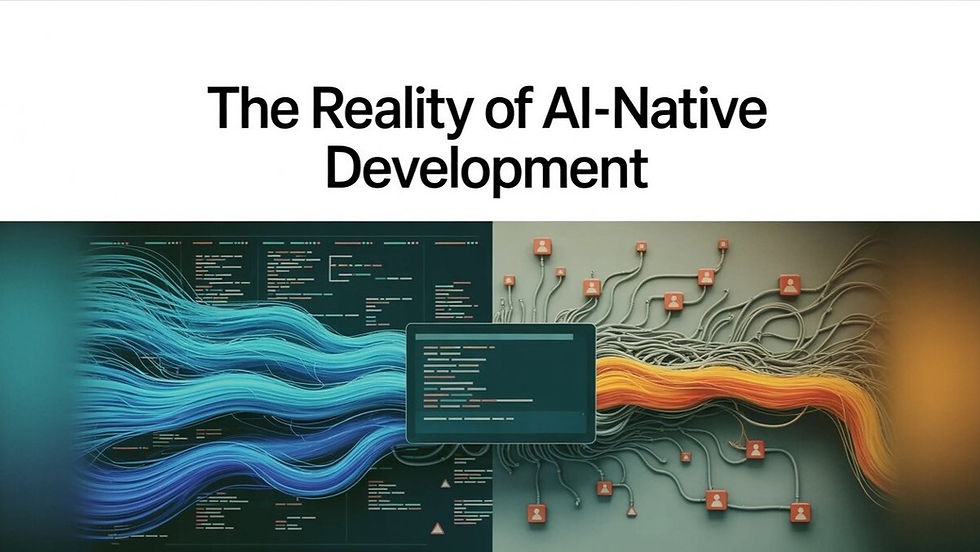The evolving consumer trends in the disruption-ready insurance industry
- Mar 2, 2019
- 3 min read
By: Siddharth Wadehra, Digital Transformation Practice Lead

We are living in the age of digital disruption and innovation, and no enterprise in other industries would have felt the need to transform as drastically as the incumbents in the insurance industry. As a matter of fact, 85% of insurers say that customer engagement and experience is a top strategic initiative in 2016.
We at BlastAsia have identified three underlying factors which are driving changes in the insurance industry:
1. The shift from non-transparent markets to customer transparency
2. The substitution (or substantial reduction in the impact) of middle man – direct producer-to-customer connection
3. The shift from being supply-driven (company-focused) to demand-driven (customer-focused)
The shift from non-transparent markets to customer transparency
In the recent past, customer market interactions, whether buying insurance services, were portrayed by the limited possibility to compare these with local agents or trusted retailers. With the emergence of readily accessible information today, this local focus widened and allowed for the 24/7 active comparison and competition among insurance companies, be it through online direct sales or price comparison sites.
The evolved insurance customer is now also able to validate a purchase intention based on peer reviews, which again reduces uncertainty and may indicate a dramatic shift in the sales of standardized, self-explanatory insurance products (eg. Property and Casualty-P&C and others). Transparency of direct sales offerings should, in general, reduce principal-agent issues and information asymmetries and therefore cut into traditional intermediaries (agents/brokers).
A report from Accenture suggests that only 22% of insurers have launched personalized, real-time digital or mobile services. Applying transparency already leads to a major impact. For example, the new-age customer who is looking for price comparison for car insurance coverage goes through the customer journey which typically starts online or on an insurance aggregator mobile application.
We at BlastAsia believe that transparency of new digital intermediation will ultimately tip the scales.
The substitution (or substantial reduction in the impact) of middle man – direct producer-to-customer connection
As observed from other industries, digital advancements have allowed companies to offer products and services directly to their target customers. Online platforms, ecosystems, and engines are the new middlemen and are substituting parts of the traditional supply chain and sales channels.
We are witnessing a similar trend in the insurance industry. As per a report from the Insurance Journal, only 16% of customers said they would definitely buy more products from their current insurance provider. Not very far into the future, easy-to-purchase (and cancel) products, direct- and event-based sales, and finally an automated real-time, traceable claims process will substitute the traditional broker.
Within a future landscape of declining product margins due to rising price competition and increasing claims ratios, human brokers are not made for scale as they cannot monitor all potential trigger points of customers in a fragmenting coverage landscape. However, brokers will remain a trusted source of advice for complex products that will not entirely be sold online such as pension planning, luxury individual products, and for customers who are unfamiliar with online services – for the time being.
The shift from being supply-driven (company-focused) to demand-driven (customer-focused)
A report from Accenture suggests that 88% of insurance customers demand more personalization from providers. This trend aggregates an individual customer-centric focus to the company level. It will be critical to cater to customer demand whenever, wherever, and via whatever intermediation, through diverse but fully- integrated sales channels (via client relationship management (CRM) systems), whether directly attached to products (e.g. cars, electronics), external plug-and-play solutions, internal direct sales, or branded ecosystems. We also believe that insurance products will be developed from the customer’s viewpoint, bundled, fragmented, and specialized, not solely following current rules of push-marketing.
Now what?
According to the Accenture Strategy Report, less than one-third (29%) of insurance customers are satisfied with their current providers. As an incumbent player in the insurance industry, you would probably agree that you saw this coming. Nimble Insurtech startups have already started catching the fancy of the new-age insurance consumer and the need for digital transformation on your company is more pertinent now than ever before.
But where do you begin? How much would it cost? Do you have the skills, knowledge, and resources to understand the impact of the buzzwords doing the rounds- Artificial intelligence, big data, the blockchain, machine learning and the like? This seems an uphill task and is understandably so!
Wouldn’t it be nice if there was a modular package which could be implemented and tested with your consumer to examine and identify low-hanging fruits quickly and cheaply? This could perhaps be followed by a more comprehensive roadmap and customizations in the future.
We in BlastAsia's digital transformation team understand the fundamental tectonic shifts in the industry!




Comments